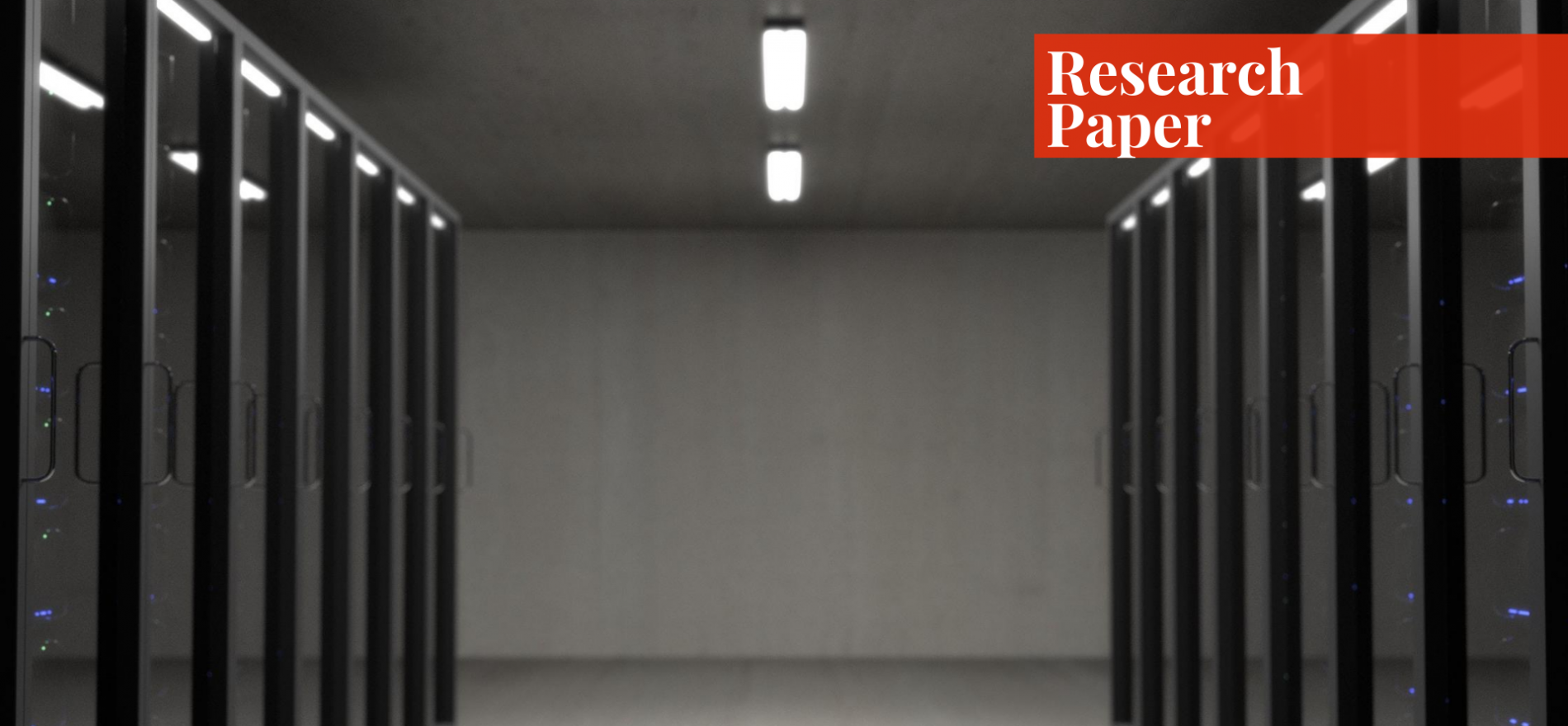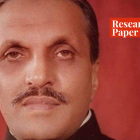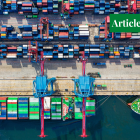Written in 2014
This research paper explains the importance of and need for e-governance and technology in Pakistan – a rapidly urbanizing country. The first section deliberates on what e-governance entails and highlights its absolute requirement in Pakistan vis-à-vis public policymaking and government institutions. The second sections provide two examples of technology in Pakistan that can aid governance and policymaking. These two examples are the National Database and Registration Authority’s (NADRA) smart national identity card (SNIC) and NADRA’s electronic voting machine (EVM).
The Need for E-governance
Urbanization is one of the greatest challenges that governments face in today’s ever-changing environment. There is a proliferating trend of people moving to cities around the world. According to the statistics, more than 70% of the world will be living in cities by 2030. This increased movement due to rural-urban migration has created problems, which urban policymakers and administrators have to solve with limited resources (especially in countries like Pakistan). The increasing number of megacities (cities that have over 10 million people) and cosmopolitans around the world reflect the effects of globalization.
The governments, especially of third world countries, are finding it very difficult to adjust to the overwhelming population of citizens increasing day by day in cities. This rapid urbanization places massive stress on the government’s service delivery and can lead to poor governance, pollution, illiteracy, lack of appropriate housing, and inefficient provision of water and sanitation etcetera. However, national and urban governments are finding innovative ways to tackle this dramatic increase in the demand for government goods and services. In today’s era of technology, information communication technology (ICT) can be an important asset in improving the efficiency and effectiveness of service delivery. “ICT (information communication technology) is seen as a medicine that can cure a nation from corruption, mismanagement, poor governance, business stagnation, inflation, illiteracy and so on” (Ghayur, 2006).
Within the last decade, governments worldwide are now moving towards e-governance, which is the use of the internet and other technology for online governance. UNESCO defines E-governance as “the public sector’s use of information and communication technologies with the aim of improving information and service delivery, encouraging citizen participation in the decision-making process and making government more accountable, transparent and effective”.
Pakistan being a developing nation and one of the most highly populated countries in the world requires e-governance in its regular government processes to reduce costs and to increase transparency, accountability, and efficiency. As Pakistan’s public sector loses billions from mismanagement and substandard work, e-governance can be a revolutionary step in moving towards a more effective governance style and a thriving economy. Internet is the fastest-growing technology and had gained 50 million users within 5 years, whereas it took television and radio 13 & 38 years respectively (Afreen, 2004).
The use of ICT in Pakistan can enable the government to be more open and accessible, thereby gaining the trust of its people. When governments allow online access to its citizens about its policies, plans, program, and services, it leads to a climate of transparency throughout the country. There is also the option of public forums, which will allow citizens to voice their opinions regarding policy matters. E-governance can eradicate the problem of inefficiency that the government of Pakistan faces regularly, as it provides efficient ways of service delivery and concurrently increases the quality of service provision.
E-governance will also allow greater accessibility for citizens to customer services and also enable the government to provide customer-oriented services. In short, e-governance leads to better governance and is the first step towards the modernization of government administrative structures to fight against the emerging problem of urbanization.
The United States and Singapore are the leading role models of e-governance as they have the financial resources and therefore can develop and implement e-governance in many of their regular government administrative structures. Pakistan is placed at 146 out of 192 countries in the e-governance development index – even Bangladesh is 12 points above Pakistan. The inclination of Pakistan towards the e-governance model started in the early 2000s where “…the Electronic Government Directorate (EGD) was established in pursuance to a decision of the federal cabinet” (Afreen, 2004). EGD falls under the Federal Ministry of Information Technology, which handles the preparation and implementation of e-governance projects. The main objectives that the government seeks to achieve via ICT are improved service delivery and improved internal operational efficiency of all departments. In the next section, the paper will deliberate on two specific examples of technology in Pakistan that can aid the government (and e-governance).
Examples of New Technology in Pakistan
Vis-a-vis technology in Pakistan, NADRA has truly shown its national commitment to this cause. NADRA has adopted improved technologies to areas where it lacked – this includes the relatively new smart national identity card (SNIC). The SNIC is different from the regular CNIC as it is Pakistan’s first electronic ID card. It is data chip-enabled, consists of 36-security features, and is ICAO (International Civil Aviation Organization) certified (Immigration and Refugee Board of Canada, 2013).
Moreover, it has a double verification mechanism – for example, if a person places their SNIC in a card reader, first the reader will authenticate/prove itself to the card and then then the card will prove its verification to the reader and only if both these mechanisms succeed, will the process continue. This double verification will be especially expedient around and during election time as the method can be used to prove that a person who has cast a vote is the same person on the registered voters list. Therefore, the SNIC will aid in minimizing identity fraud and perhaps even eliminate it.
The advantages, however, go beyond this and extend into other spheres. They include: 1) People will be easily able to identify themselves on the internet and offline 2) It will become difficult to commit forgery or counterfeit this card as it is extremely tedious to duplicate (Mayhew, 2012) 3) The SNIC can support the implementation of e-governance 4) It allows easy pension disbursement (The News, 2013). NADRA currently plans to replace all CNICs with SNICs by 2020 – this will change things in Pakistan if it is properly implemented.
The next example is how NADRA has made a new electronic voting machine (EVM) in light of the thumbprint verification scandal that plagued the elections. The plan is to place these EVMs on all polling stations across Pakistan, to ensure voting transparency and reduce “dhandli” (Kamran, 2013). There are several integral advantages of e-voting and EVMs. The two biggest of these are that these machines are less likely to make counting mistakes (no human error) and they are much faster than the manual method – which entails using one’s thumbprint and NIC to confirm their identity manually and then stamping the name of their preferred candidate on the ballot paper and inserting this paper inside a box. MIT’s Charles Stewart states that due to replacing older voting machines (and updating them) and better election administration, around 1.7 million more votes were counted in America’s presidential elections starting in 2004.
When counting votes, Pakistan has always relied on manual means let alone using machines – thus one can only imagine the massive number of “lost votes” in the country due to relying on anachronistic methods. The other major advantage of EVMs is that it provides improved accessibility to disabled people. EVMs can allow the use of headphones/earphones, joysticks, foot pedals, as well as other accessories to increase the accessibility for disabled people. Being cost-effective is another advantage – according to NADRA, the EVM will incur only 40% of the total magnetized ink cost and would thus save money.
However, how does the EVM work and ensure transparency in elections? There are three components of NADRA’s EVM. The Nation (2013) explains that the first is the “voter identification unit”, which will verify the voter’s identification through CNIC/SNIC and their fingerprints. Following this is the “vote-casting unit”, which will show the voter the candidates from their respective constituency and will allow them to cast their vote. The third component is the “result management unit”, which, after polling is done, will print the list of candidates and their respective votes. NADRA, following orders of the Supreme Court, has also made an electronic voting software to help the millions of overseas Pakistanis so they can vote from abroad. This proliferation of technology in Pakistan will benefit the country greatly in the future, but complacency should be avoided as there is much more that can be done.
How SNICs and EVMs Can Aid Governance
SNICs and EVMs represent the innovation of technology in Pakistan. SNICs can massively aid in the formulation of urban public policy. The main advantage would be accurate data. Due to forgery of SNICs being almost impossible and because most of Pakistan will be using these cards by 2020, the government can get an accurate number on different demographics across Pakistan. This was possible with the old NICs as well but they are nowhere near accurate as the SNICs. So, for example, due to SNICs policymakers will be cognizant of the total number of women aged 18-30 and hence this will aid them in policy decisions (such as women empowerment programs).
Another example is using the SNIC in estimating how many people are unemployed and making policy decisions based on this. Besides accuracy, the SNIC will precipitate transparency. For example, as mentioned earlier, the SNIC will allow more free and fair elections as it would minimize “ghost votes” – i.e. one person’s identity card being used to cast multiple votes or casting votes when the cardholder is deceased. SNICs will reduce or even eliminate this menace as the double verification method (mentioned above) makes it a secure card. Due to this, Pakistan can finally step out of its legacy of tainted elections. The SNIC would thus allow the elected governments to become more credible (as the elections would finally be credible). One of the fundamental facets of a true democracy is transparency and free elections.
Notwithstanding the preceding, the SNICs also have a security feature where it allows the proper authorities to track or know a person’s location. This too can significantly help urban policy and security institutions as the tracking feature can be used to solve kidnapping cases, locate terrorists, and so on. The police, Intelligence Bureau (IB), ISI (Inter-Services Intelligence), and Federal Investigation Agency (FIA) could improve their capabilities due to the SNIC.
The SNIC can also allow urban policy to focus or enhance e-commerce processes. With most of the world buying goods and services online, Pakistan too is taking steps in the right direction. The SNIC can expedite this progress by allowing people to buy and sell online more securely, promptly, and effectively. Government policies can induce greater investment in promoting e-commerce websites and thus enabling local and foreign companies to set up “click and mortar” organizations in Pakistan. “Click and mortar” organizations do not have much of a physical presence but are present predominantly online (on the internet). The internet is a novel avenue for employment and Pakistan’s public policy should focus on endorsing such avenues. The policy should focus on promoting bloggers, vloggers, e-commerce websites, and so on.
Vis-à-vis EVMs, the paper reiterates that this, akin to the SNIC, will improve transparency, reduce costs, increase the speed of compilation of results, and usher in an era of free and fair elections. This will allow the elected government to be recognized as a legitimate government. For urban policy and other government policies to be successful, they need to be backed by the public and this requires having a parliament of legitimately elected officials. Furthermore, NADRA’s electronic voting software will also change the electoral landscape, as it will, for the first time, allow overseas Pakistanis to cast their vote. These Pakistanis are one of the driving forces of the economy due to the remittances they send from abroad. There are currently 4.5 million Pakistanis who are overseas and empowering them is beneficial. Thus, implementing technology in Pakistan can bridge the gaps between the government and the Pakistani diaspora by unveiling avenues of greater cooperation such as charity work, increased export and imports, further remittances, augmentation of the civil society and so on.
References
- Arfeen, M. I. (2004). IMPACT OF E-GOVERNANCE ON THE ECONOMY OF PAKISTAN. Pakistan Institute of Development Economics, 1-23.
- Canada: Immigration and Refugee Board of Canada. (2013, November 6). Pakistan: Smart National Identity Card (SNIC), including content, validity period, purpose, and associated benefits. Refworld. https://www.refworld.org/docid/52eb9d5b4.html
- Ghayur, A. (2006). Towards Good Governance: Developing an e-Government. The Pakistan Development Review, 45(4), 1011-1025.
- Kamran, A. (2013, December 12). NADRA launches electronic voting machine to stop fake voting. Pakistan Tribe. https://www.pakistantribe.com/3077/nadra-launches-electronic-voting-machine-to-stop-fake-voting
- Mayhew, S. (2012, October 15). NADRA introduces Pakistan’s new biometric smart ID cards. Biometric Update. https://www.biometricupdate.com/201210/nadra-introduces-pakistans-new-biometric-smart-id-cards
- The Nation. (2013, December 13). NADRA develops electronic voting machine. https://nation.com.pk/13-Dec-2013/nadra-develops-electronic-voting-machine
- The News (2013, April 14). NADRA launches pension disbursement scheme. https://www.thenews.com.pk/archive/print/424155-nadra-launches-pension-disbursement-scheme
If you want to submit your articles and/or research papers, please check the Submissions page.




















